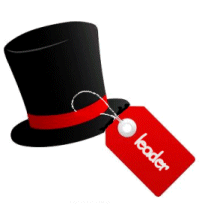Many teacher librarians associate leadership with hierarchy and believe that it is the domain of the principal and the school’s executive.
But anyone with specialist knowledge and skills acan be a leader, even students, and particularly the TL because their position within the school is often unique. In many cases, there is only one of us in a school, perhaps several schools, and staff and students look to us as being the leaders in literature and information access and management.
Teacher librarians are ideally suited to lead from the middle.
Much has been written in many forums about leadership types and there are almost as many types as there are articles about them. Examples are
- Transactional Leadership
- Situational Leadership
- Transformational Leadership
- Servant Leadership, and
- Instructional Leadership
A good place to start for a basic understanding of the sorts of leadership that are applicable to schools would be Marzano, R. J., Waters, T., & McNulty, B. A. (2005). Some theories and theorists on leadership. School leadership that works: from research to results (pp. 13-27). Alexandria,Va.: Association for Supervision and Curriculum Development. (If you cannot access this title, a review of the key factors is available here.)
As well as there being a multitude of articles about leadership theory there are any number of video clips including Leadership Theory and Critical Skills and Ten Leadership Theories in Five Minutes.
However, the most effective form of leadership in the school situation would seem to be transformational, in which change is effected through
- having a clear vision that is articulated well,
- a passion for the change and involvement in what needs to be done
- a desire to ensure that all those involved succeed through encouragement and empowerment to explore new ways and new opportunities
Nelson Mandela is widely regarded as being an exceptional example of a transformational leader.
Check out your natural leadership style by taking this quiz developed by my leadership hero, Stephen Covey and assess your leadership skills using this one. Even if you don’t view yourself as a leader, perhaps even shy away from the mantle, as the TL you ARE a leader so it’s worthwhile knowing and learning about the critical elements essential for success of your vision and the design and delivery of effective programs and services which will enrich and enhance the teaching and learning in your school.
Whatever the style, effective leadership has some critical skills, common to any situation – business, school, library, whatever.
Chapter 4 of School leadership that works: from research to results is entitled The 21 Responsibilities of the School Leader and the authors set out a set of characteristics which, according to their research, are essential for the successful school leader if there is to be a significant impact on student academic achievement. Substitute “teacher librarian’ for “principal” and it’s possible to understand what the TL needs to know, understand, appreciate, value and do to ensure the achievement of the vision and the successful implementation of the plan.
Let’s look at some of these characteristics and how they might be applied to your vision and strategic plan.
Change Agent
The change agent is not satisfied with the status quo just because it is the way things have always been done. They willingly and actively challenge it if there is a proven better way of doing things that is relevant to the situation. “If it ain’t broke don’t fix it” is an anathema to them because they are constantly striving for the best, operating at the leading edge of a school’s competence and are prepared to take risks, encourage and protect those who take them with them and live with uncertain outcomes.
The TL who is a change agent examines two key elements…
- What is happening at the leading edge of education generally and considers how the library’s services can be shaped to accommodate and reflect this. ( A great example is the early adoption of ICT and its embedding into the curriculum by TLs which is why they are often viewed as the ICT specialist.)
- What is happening in leading edge libraries, school , tertiary and public, and considers how these practices can be embedded into their situation. (A great example of this is the way that the Arizona State University libraries have embraced social media to connect with students.)
There has been much discussion and debate about the need for libraries let alone librarians and teacher librarians in this ‘digital age’ where “everything is available on the Internet. To help crystallise your responses when challenged this way have a look at this range of infographics that show that while our direction may have changed, our destination has not. Use those that encapsulate your circumstances best to create your own to reflect your role, purpose, goals and influence and display it prominently.
Ideals and Beliefs
Well articulated beliefs are at the core of effective leadership. The leader knows and understands what is best policy and practice in teaching and learning and is driven to provide these within the school. This knowledge and understanding is based on an intimacy with
- the ethos of the school
- the school community’s desires and expectations
- who the students and staff are-
- their needs, interests and abilties
- their ethical, cultural and social make-up
- their aspirations and challenges
- their rights, responsibilities and roles
- pedagogy
- curriculum requirements, design, delivery and assessment
For the TL, this means identifying and articulating your beliefs about teaching and being a TL as demonstrated in The teacher’s hat and understanding the rights of the students as articulated in The Students’ Bill of Rights and marrying these to both current best practices in teaching and library services – hence our dual title- and the school’s vision and goals. From this comes the vision statement.
Culture
Fostering a positive culture of community, communication and co-operation based on shared beliefs is essential if the library is to be seen as a place that belongs to all in the learning community. The TL should be seen as a custodian not the owner.
A community-based culture is the most effective way to achieve change and building your library committee is the first step in this. Sharing the sense of ownership amongst all the stakeholders, including the students, is much more likely to achieve the vision.
Seek ways that staff and students can have input into the design and delivery of the library’s services and programs and into the decision-making process. Acknowledge this through the policies you write and the procedures you develop.
Communication
The library is not an ivory tower. It needs to be receptive and responsive to the needs of its users. Communication is essential! Establish strong lines of communication to and from the library using a range of traditional and social networking tools so that you can not only reach the visible users but also that invisible long tail who believe that the library has nothing to offer them.
Effective and frequent communication also keeps the library’s purpose and goals in focus and ensures accountability. If you say you’re going to do something, then you need to deliver! Publicise the goals of your strategic plan so they are clear and visible to all, adhere to the timeframe and performance indicators, and celebrate the milestones.
Affirmation, Acknowledgement and Rewards
Everyone wants to have what they have contributed or achieved recognised so be aware of what your team and your clients are doing and seek appropriate ways to acknowledge these. It can be a simple thank you, a thumbs-up, a private note, a team-based reward or a full-blown celebration.
Build relationships. The best leaders are aware of the individual and the effort they put in and take the time to let the person know that they know. Even if it is dissent or criticism, acknowledge the courage that the person had in raising the issue, thank them for their new insight and consider what has been offered. If you take the suggestion on board, attribute it to its source; if you don’t then take the time to explain to the person why their idea is not a good fit at this time.
Collaboration
John Donne wrote “No man is an island.” No matter how skilled, no single TL can provide the best of the best from the library without collaboration and if progress, achievement and success are to be sustained it is essential. It is very easy for a specialist such as a TL to believe they are the key-holder and gate-keeper to the knowledge but if that is not shared, what’s the point of having it?
Using a team approach to achieve the vision is the most likely road to success but there are bound to be road-blocks. View these videos for some insight into problem-solving and group decision-making to turn those obstacles into opportunities.
Professional Knowledge, Practice and Commitment
Effective leaders are seen to talk the talk and walk the walk. Obvious and demonstrated sound professional knowledge, practice and commitment inspire confidence in the team, but you need to to empower your team so they have the wherewithal to accomplish what they have undertaken. Remember:
- Your team (and the broader learning community) do not have the TL’s specialist knowledge so where it is appropriate explain why things are so, and back it by sharing relevant research and professional reading.
- Your team members may need personal professional learning so they can accomplish what they need to do so look for the most appropriate way to share this whether it is 1:1 with you in an incidental situation such as learning to access a database; a mentor relationship in which the one who has empowers the one without; a school-wide initiative such as building inquiry-learning as the basic pedagogy in alignment with the Australian Curriculum; or seeking sources further afield for either yourself or your colleagues. Teachers, as well as students, are learners!
- You need to enable access to the resources – human, financial, physical and time – that are essential for the team members to achieve their commitments.
If the library’s services driven by a knowledgeable qualified teacher librarian are to be seen to be as essential, non-negotiable elements of the school’s core business then each of us has to step into the limelight, find our inner leader and let it shine.
It is impossible to address the whole issue of the TL as a leader in one blog post, so if you want to follow this path in greater detail you are urged to undertake Teacher Librarian as Leader through Charles Sturt University to whom I am indebted for much of my knowledge and the content of this blog post.
You might also like to read 4 Ways to Lead from the School Library
In December 2016, School Library Connection posted the results of their one-question-survey about who were considered to be “school library rockstars” in a Wordle.

No surprises about the names in the biggest print but what is interesting and important is what it is that makes these leaders stand out and influence our professional thinking, learning and practice in the way they do. As the article says, “Aspiring school librarian leaders can use the descriptor headings as action statements.”

